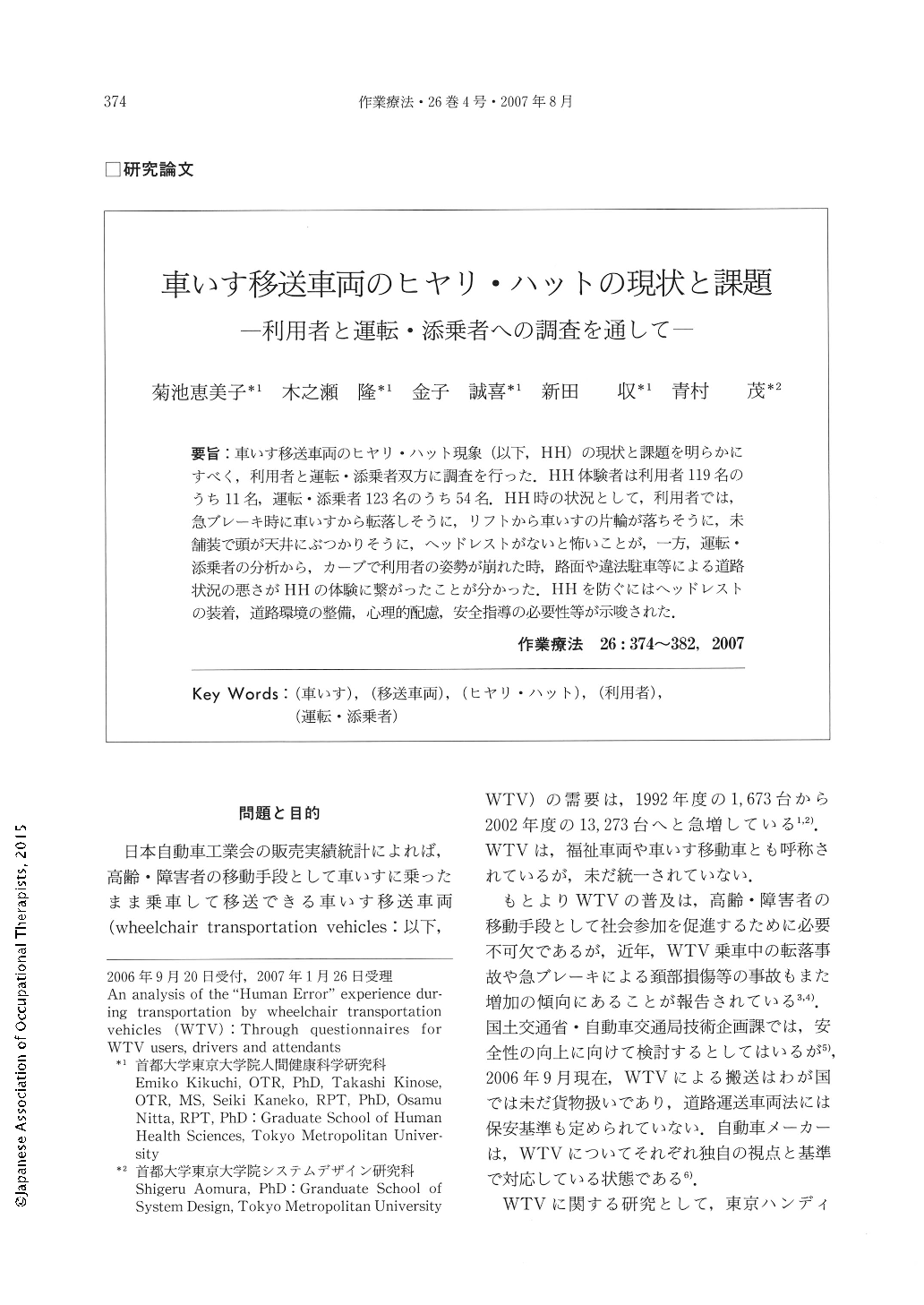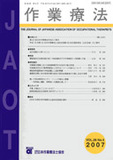Japanese
English
- 販売していません
- Abstract 文献概要
- 1ページ目 Look Inside
- 参考文献 Reference
要旨:車いす移送車両のヒヤリ・ハット現象(以下,HH)の現状と課題を明らかにすべく,利用者と運転・添乗者双方に調査を行った.HH体験者は利用者119名のうち11名,運転・添乗者123名のうち54名.HH時の状況として,利用者では,急ブレーキ時に車いすから転落しそうに,リフトから車いすの片輪が落ちそうに,未舗装で頭が天井にぶつかりそうに,ヘッドレストがないと怖いことが,一方,運転・添乗者の分析から,カーブで利用者の姿勢が崩れた時,路面や違法駐車等による道路状況の悪さがHHの体験に繋がったことが分かった.HHを防ぐにはヘッドレストの装着,道路環境の整備,心理的配慮,安全指導の必要性等が示唆された.
The need for wheelchair transfer vehicles (WTV) is increasing rapidly in Japan. Accordingly, the number of accidents is also escalating. The purpose of this study was to clarify the "Human Error (HE)" situation and some issues with regard to WTV. A questionnaire survey had to be done on the WTV users and the drivers & the attendants. The findings were as follows : ① 11 (9.2%) users out of 119 were encountered HE, 54(43.9%) drivers out of 123 were experienced in HE on WTV. ② There was no significant difference between the age, types of the cars and HE. ③ There was no significant difference between HE and the way of fixations of the W/C to the cars. ④ The situations of HE on WTV has included, so far, the posture collapse and the bad road state. It was suggested that the necessity of the headrests, the road environment, psychological supports and safety guidance are important for preventing the HE of the WTV.

Copyright © 2007, Japanese Association of Occupational Therapists. All rights reserved.


